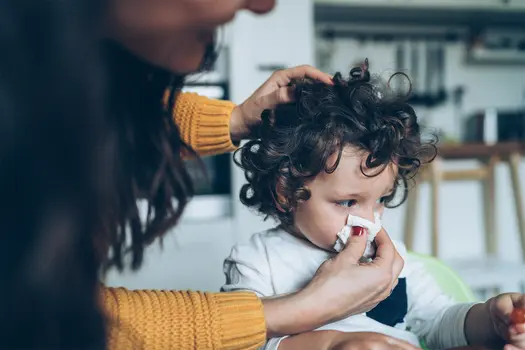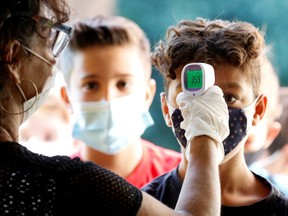The Role of Children in COVID Transmissibility
"I know many want to 'live with COVID' and abandon the layers of protection that were previously mandated, but it's important to be aware of the high transmissibility of this virus in closed, indoor settings, such as schools.""Flash forward to where we are today with an extremely transmissible variant of COVID-19 and the majority of pandemic restrictions lifted; it's safe to say transmission rates will be higher even though we have a high vaccination rate amongst those who are eligible.""As significant COVID-19 transmission continues within households and throughout the community, it's important to continue doing what you can to keep yourself and those around you safe -- mask while indoors, wash your hands, get vaccinated with all the doses you are eligible for, stay home if you're sick and limit close contacts."Dr. Maala Bhatt, emergency physician, director of emergency medicine research, Children's Hospital of Eastern Ontario
 |
| WebMD |
A new study by researchers in Ottawa published in the journal CMAJ Open, which counters the earlier belief that children play a small role in COVID-19 transmission, finds that contrarily, children are indeed a significant source of the virus spread in households. While children transmit COVID at a lesser rate than do adults, researchers from the CHEO Research Institute, the Ottawa Hospital Research Institute and the University of Ottawa, found children contribute to significant spread within studied households, to the extent that they infect 37 percent of household members, as the first infected.
In contrast, roughly fifty percent of household members become infected by the initial individual to contact the virus. Children, it was found, were as likely as adults to become infected. The study authors hypothesized children would become "an even greater source of spread within households with the emergence of more infectious variants", including the BA.2 subvariant of Omicron, now dominating areas of the world.
One of the study's lead authors, Dr.Maala Bhatt, emphasizes the importance of understanding how the virus can transmit in enclosed settings, including schools, leading to a need for people to follow guidelines meant to protect themselves and others from virus transmission.The provincial COVID-19 Science Advisory Table in Ontario notes as well, that children have a larger role in the spread of the SARS-CoV-2 virus than was initially suspected.
The research team studied 694 household participants from 180 households in the Ottawa area, including households where one member at least had experienced COVID-19, and households with at minimum one child and upward. It is also worthwhile noting that the research was conducted in a period when the pandemic's virus strain was not as transmissible, a time when firm pandemic restrictions were in place.
While hospitals are currently not overwhelmed with COVID patients as in January, emergency departments are facing the stress of numbers, while confirmation rates of COVID infectivity are rising, even among the child demographic. Researchers continue to recognize more deeply the potential long-term health impacts of COVID-19, including how long immunity from vaccinations or from COVID-recovery remain potent.
 |
| A pupil has his temperature checked at school. Photo by REMO CASILLI /REUTERS |
Labels: Children, COVID Transmission, Infectious Variants, Research

0 Comments:
Post a Comment
<< Home